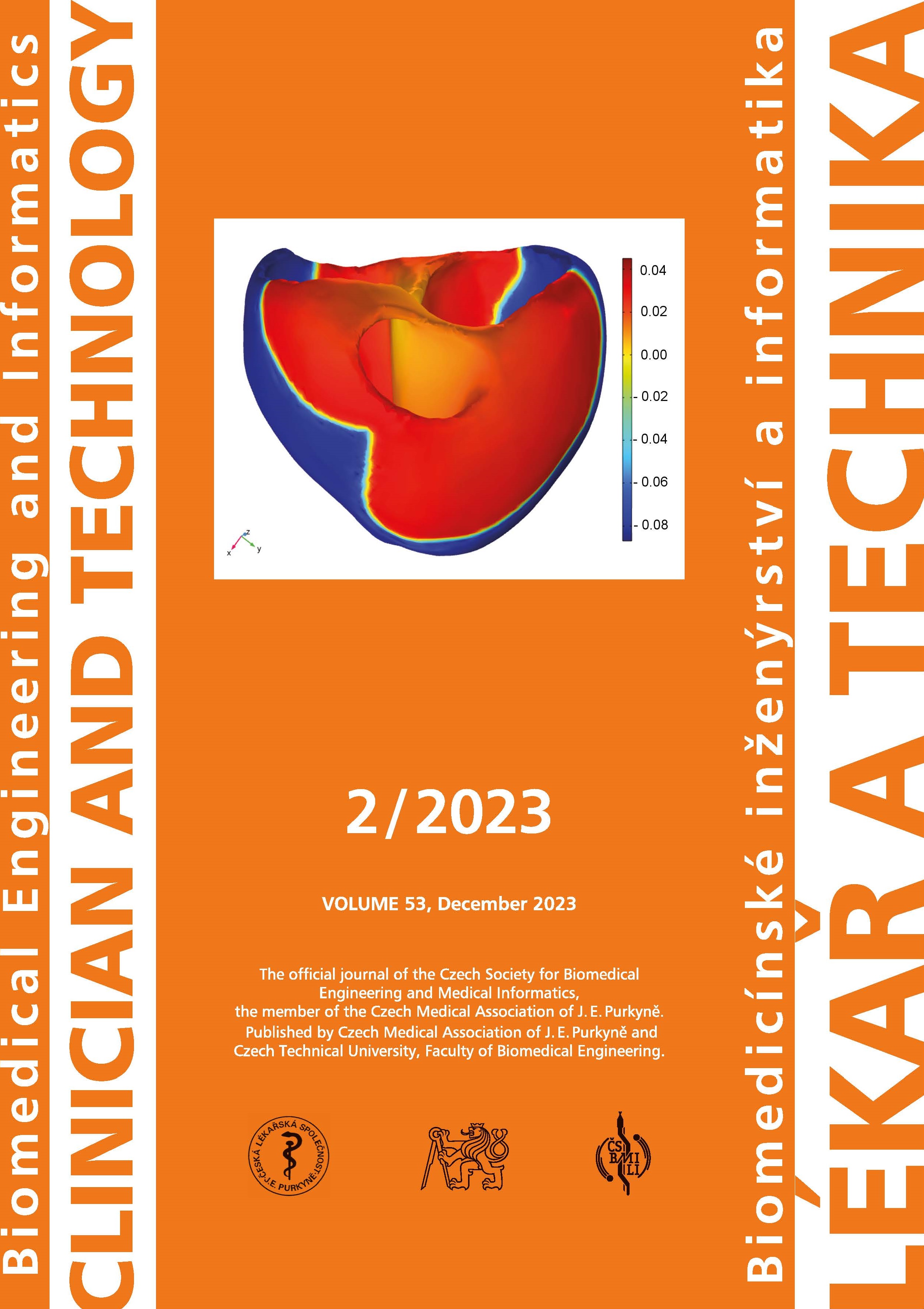SIMULATION OF PREMATURE VENTRICULAR CONTRACTIONS IN PATIENT SPECIFIC BIDOMAIN VENTRICULAR MODEL
DOI:
https://doi.org/10.14311/CTJ.2023.2.03Abstract
The goal of the study was to simulate electrical activation of the heart ventricles and corresponding body surface potentials (BSPs) during premature ventricular contractions (PVC) using the patient specific realistic homogeneous model of cardiac ventricles and the torso. Real position of the initial ectopic activation during PVC was determined by intracardial measurement in the upper part of the right ventricle near the His bundle and confirmed by successful catheter ablation of the PVC origin. Simulated electrical activation in the ventricular model was started at the position of the initial ectopic activation as well as at several other sites at various distances from this position. The propagation of electrical activation in the ventricular model was modeled using bidomain reaction-diffusion (RD) equations with the ionic transmembrane current density defined by the modified FitzHugh-Nagumo (FHN) equations. The torso was modeled as a homogeneous passive volume conductor. The RD equations were numerically solved in the Comsol Multiphysics environment. Simulated ECG signals and BSPs were compared with those measured during PVC in a real patient. The polarity and shape of simulated and measured ECG leads as well as the BSP distribution during the PVC were in best agreement when the stimulated region was less than 10 mm from the position of the initial ectopic activation.
Downloads
Published
Issue
Section
License
Copyright (c) 2024 Elena Cocherová, Lukáš Zelieska, Milan Tyšler

This work is licensed under a Creative Commons Attribution 4.0 International License.
Authors who publish with this journal agree to the following terms:
- Authors retain copyright and grant the journal right of the first publication with the work simultaneously licensed under a Creative Commons Attribution License (https://creativecommons.org/licenses/by/4.0/) that allows others to share the work with an acknowledgment of the work's authorship and initial publication in CTJ.
- Authors are able to enter into separate, additional contractual arrangements for the non-exclusive distribution of the journal’s published version of the work (e.g., post it to an institutional repository or publish it in a book), with an acknowledgment of its initial publication in this journal.
- Authors are permitted and encouraged to post their work online (e.g., in institutional repositories or on their website or ResearchGate) prior to and during the submission process, as it can lead to productive exchanges.
CTJ requires that all of the content of the manuscript has been created by its respective authors or that permission to use a copyrighted material has been obtained by the authors before submitting the manuscript to CTJ. CTJ requires that authors have not used any copyrighted material illegally, as for example a picture from another journal or book, a photo, etc. It is the author’s responsibility to use only materials not violating the copyright law. When in doubt, CTJ may ask the authors to supply the pertinent permission or agreement about the use of a copyrighted material.
The opinions expressed in CTJ articles are those of authors and do not necessarily reflect the views of the publishers or the Czech Society for Biomedical Engineering and Medical Informatics.


